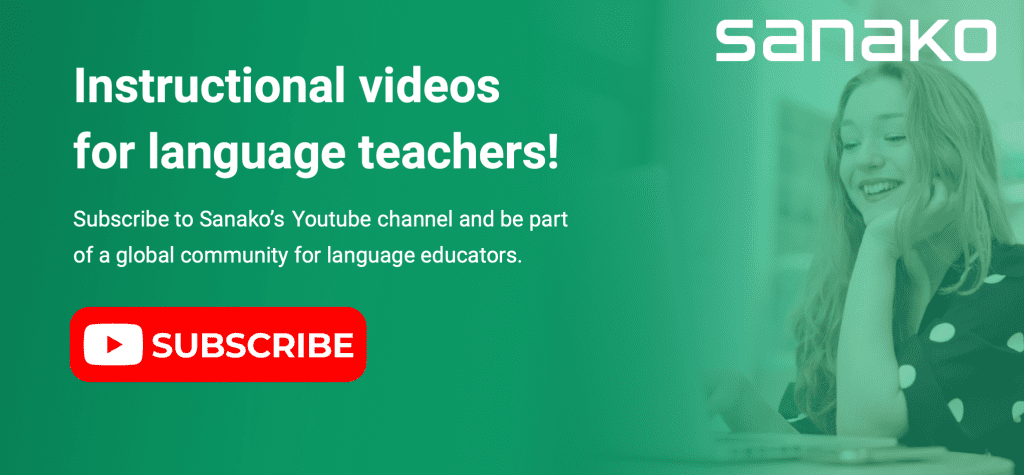Do you often find yourself thinking; ‘Who am I as a teacher?’ Have you ever given yourself a single moment to think about your identity as a teacher? Are you born as a particular type of teacher? Is your identity fixed or does it develop in various ways over time? This Sanako’s blog article will focus on teacher identity and the main types of teachers especially in the context of language teaching
What is teacher identity?
Simply speaking, teacher identity is defined as the beliefs, values, and commitments an individual holds toward being a teacher. Ball and Goodson (1985) argued that “The ways in which teachers achieve, maintain, and develop their identity, their sense of self, in and through a career, are of vital significance in understanding the actions and commitments of teachers in their work”. They separated the situated from the substantive identity. The substantive identity is thought to be the typical features or (close to) the true nature of the person, including the qualities that are already part of the personality rather than skills that can be learned. While the situated self adapts to the context or situation for a specific purpose.

According to Pennington & Richards (2016), teacher identity is a dynamic evolving process which means it is open to learning and context modification in their daily lives and wilder fields. Here are 3 main types of identity that teachers normally take on:
1. Situated identity
Situated identity is a malleable presentation of self that we recognize or enact in different situations. New, inexperienced or trainee teachers typically employ this identity. They believe they have a good understanding of their identity as a teacher, what and how they should behave in the class, and the roles of students. The observation of traditional teaching and prior experiences when they were students provides a structure and hierarchy of the class. For example, teachers stand in the front as the leader of the class delivering knowledge while students sit quietly and listen carefully as passive receivers.
2. Transposable identity
As a more informal and personal identity, it is a relationship-oriented and student-centered teacher identity. Teachers shift leader style from directive to consultative and encourage student-centered learning by empowering freedom to students in planning, implementation, and making decisions about their learning. Positive student-teacher relationships encourage more students to engage actively in the process of learning and promote their willingness to learn. However, this identity perhaps does not work effectively for inexperienced or new teachers who have insufficient experience using different pedagogical methods or lack some content knowledge. Neither does it appeal to young students because these students are neither mature enough nor have adequate knowledge of proper structuring acts in the class. Consequently, it could lead to chaos.
3. Professional identity
A teacher’s background, skills, beliefs, values, attitudes, and experiences will all shape their dynamic teacher identity. A professional identity helps connect their personal experiences and prior educational experiences. The personal self of a teacher forms the basis of their teaching style and distinguishes themselves from others. We have heard of a born musician or painter but have difficulty saying such a thing about a teacher. Precisely speaking, the passion we seem to be born with may contribute to a constructive learning environment but constant efforts and knowledge are needed regarding learners, learning, and teaching management. To create a professional language teacher’s identity, the discipline of language teaching and knowledge of the larger field must be combined. The teacher should have a good sense of themself, grasp the meaning of being a teacher in a specific situation, and have a good understanding of the broader education field.
The teacher’s identity is an evolving process of negotiation and interpretation within the context in the classroom and their social positions (Pennington & Richards, 2016). The identity shaping may never be completed and finding an effective balance between the aforementioned identities is not an easy decision. Contexts and personal characters should always be taken into account.
If you’re a language teacher who’s looking for inspiration to design and explore new learning paths, then do check out Sanako’s Youtube Channel for instructional videos for language educators. Subscribe now and be part of our global community for language educators!
References used in this article:
Betina Hsieh. (2017) Exploring Evolving Role(s) of Literacy in Secondary Preservice Teachers’ Work: A Comparative Case Study. Literacy Research and Instruction 56:4, pages 342-361.
George, J. M., Mohammed, J., Quamina-Aiyejina, L., Fournillier, J. B., & Otway-Charles, S. (2001). Primary teacher trainees in Trinidad and Tobago: Characteristics, images, experiences, and expectations. School of Education, UWI, St. Augustine.
Pennington, Martha C, & Richards, Jack C. (2016). Teacher Identity in Language Teaching: Integrating Personal, Contextual, and Professional Factors. RELC Journal, 47(1), 5-23.

